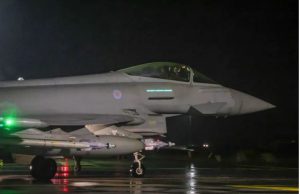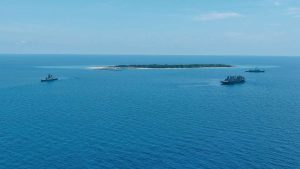The facility, under construction since 2021, marks a significant upgrade to Cuba’s surveillance capabilities, which are believed to be linked to China…reports Asian Lite news
Cuba is constructing a new radar site near Santiago de Cuba, likely aimed at monitoring the nearby US naval base at Guantanamo Bay, according to satellite images analysed by the Center for Strategic and International Studies (CSIS), media reported.
This facility, under construction since 2021, marks a significant upgrade to Cuba’s surveillance capabilities, which are believed to be linked to China, Reuters reported.
However, Cuban Vice Foreign Minister Carlos Fernandez de Cossio refuted claims of Chinese military interests on the island, stating that the Wall Street Journal’s reports are baseless and meant to intimidate. He emphasised that there is no verifiable evidence of Chinese military bases in Cuba.
Due to its proximity to the US, Cuba is a strategic location for China, Washington’s primary rival, to gather signals intelligence. CSIS described the new radar site as a “powerful tool” capable of monitoring US military air and maritime activity.
The circularly disposed antenna array at the site, with a diameter of approximately 130 to 200 meters, could potentially track signals up to 9,206 miles away.
The facility would offer China a strategic vantage point near the Guantanamo Bay Naval Station, just 45 miles east of Santiago.
While similar arrays were widely used during the Cold War by Russia and the US, both countries have since moved to more advanced technologies. However, China continues to develop these arrays, including on outposts in the South China Sea.
US officials have previously alleged that China has been conducting espionage activities from Cuba for years and has been upgrading its intelligence capabilities there since 2019, allegations denied by both Beijing and Havana.
According to a earlier report by the US Intelligence Community, China was reportedly considering pursuing military facilities in multiple locations, including Pakistan, Burma, Cuba, Equatorial Guinea, Seychelles, Sri Lanka, Tajikistan, Tanzania, and the UAE.
These facilities are beyond developing its military base in Djibouti and its military facility at Ream Naval Base in Cambodia.
“Beijing will focus on building a fully modernised national defence and military force by 2035 and for the PLA to become a world-class military by 2049. In the meantime, the CCP hopes to use the PLA to secure what it claims is its sovereign territory, to assert its preeminence in regional affairs, and to project power globally, particularly by being able to deter and counter an intervention by the US in a cross-Strait conflict,” the assessment by the US intelligence said.
However, China lacks recent warfighting experience, which probably would weaken the PLA’s effectiveness and leaders’ willingness to initiate a conflict, it said.
“Xi Jinping’s prioritisation of security and stability for the CCP is undermining China’s ability to solve complex domestic problems,” it added.
“Beijing’s hardline approach to alleged separatism in Xinjiang, Hong Kong, and Tibet, as well as broader crackdowns on religion and dissent in China, have generated widespread global criticism of China’s human rights abuses and extraterritorial interference,” it added.
ALSO READ: US curbs on AI investments hinders ‘healthy development’: China






